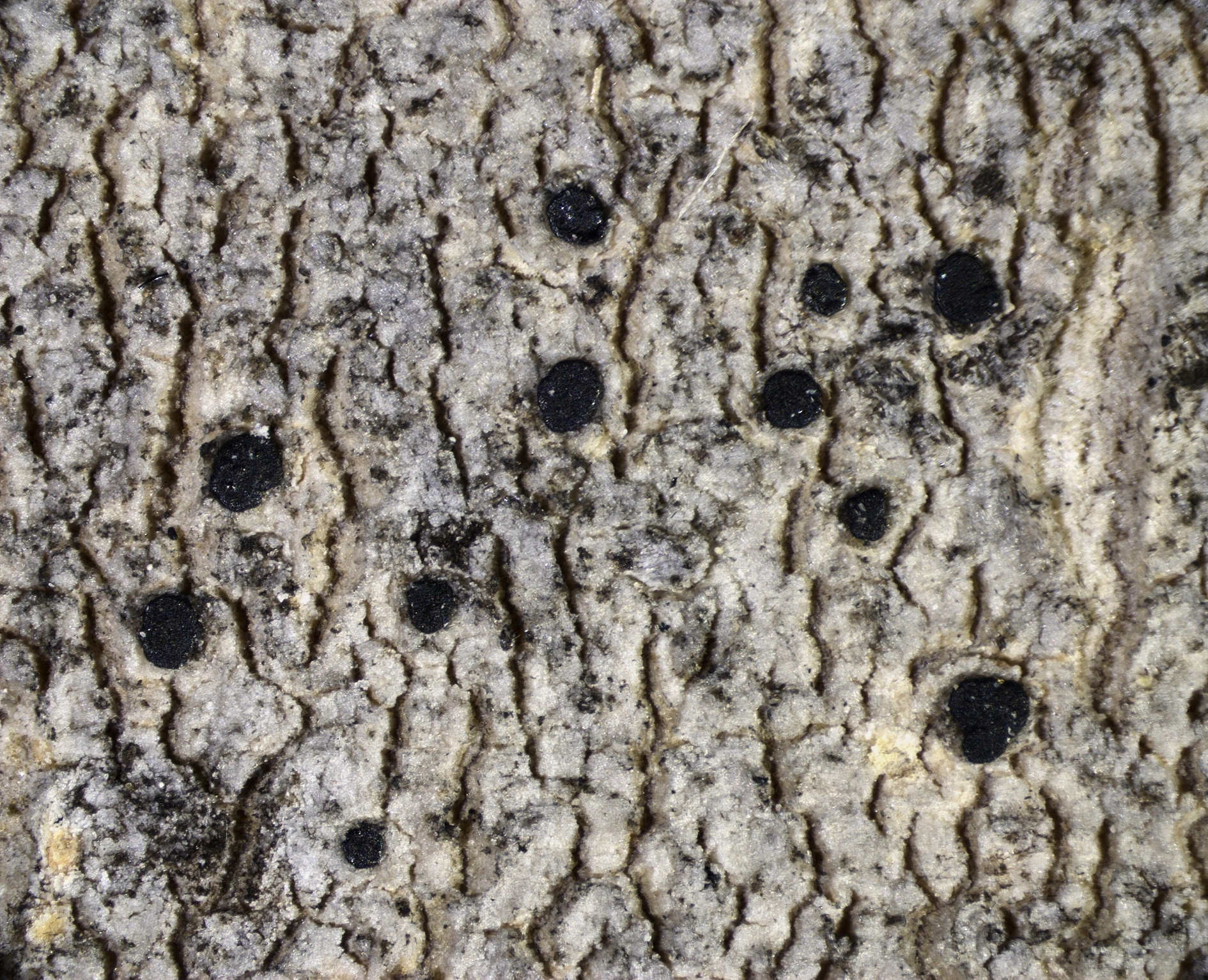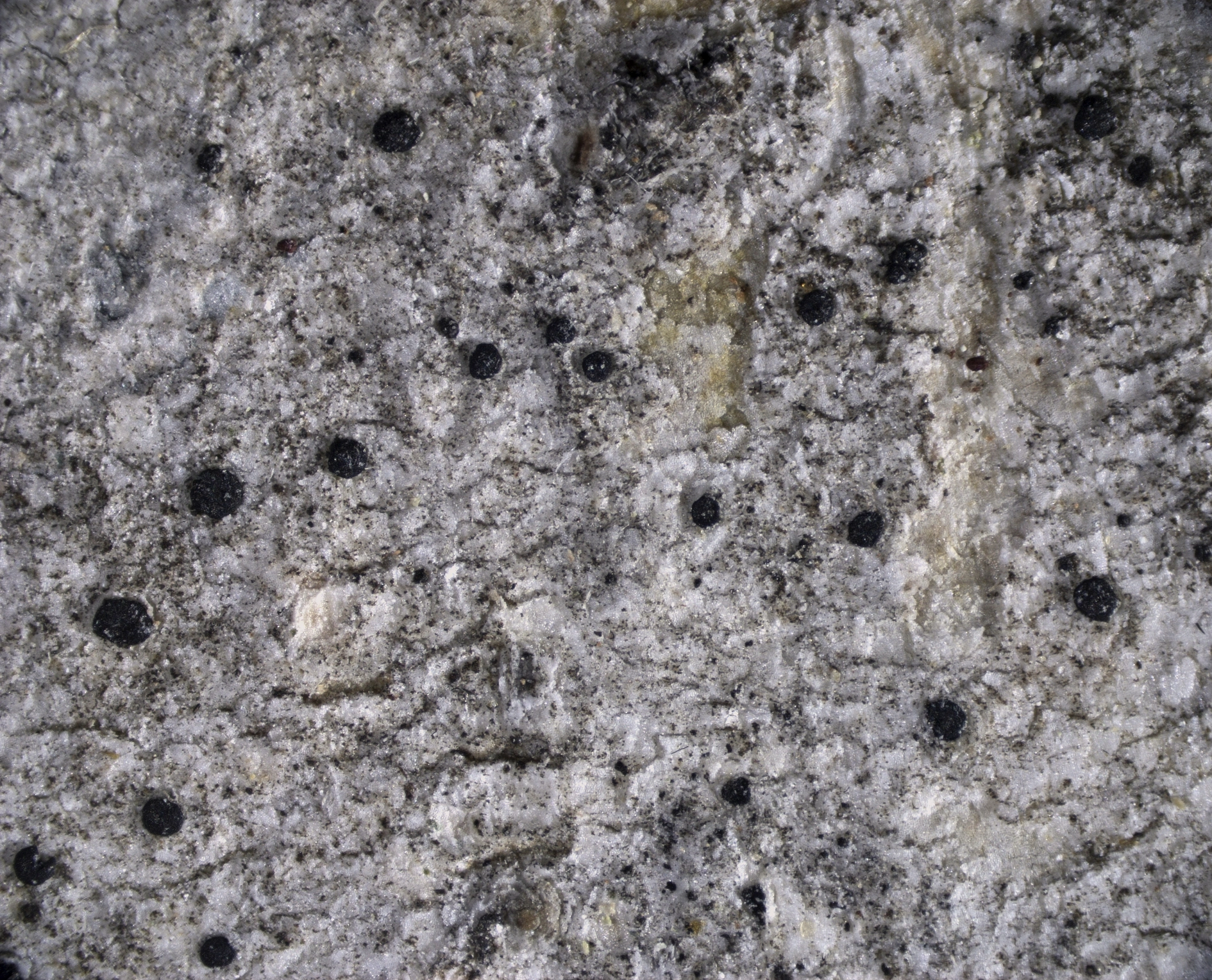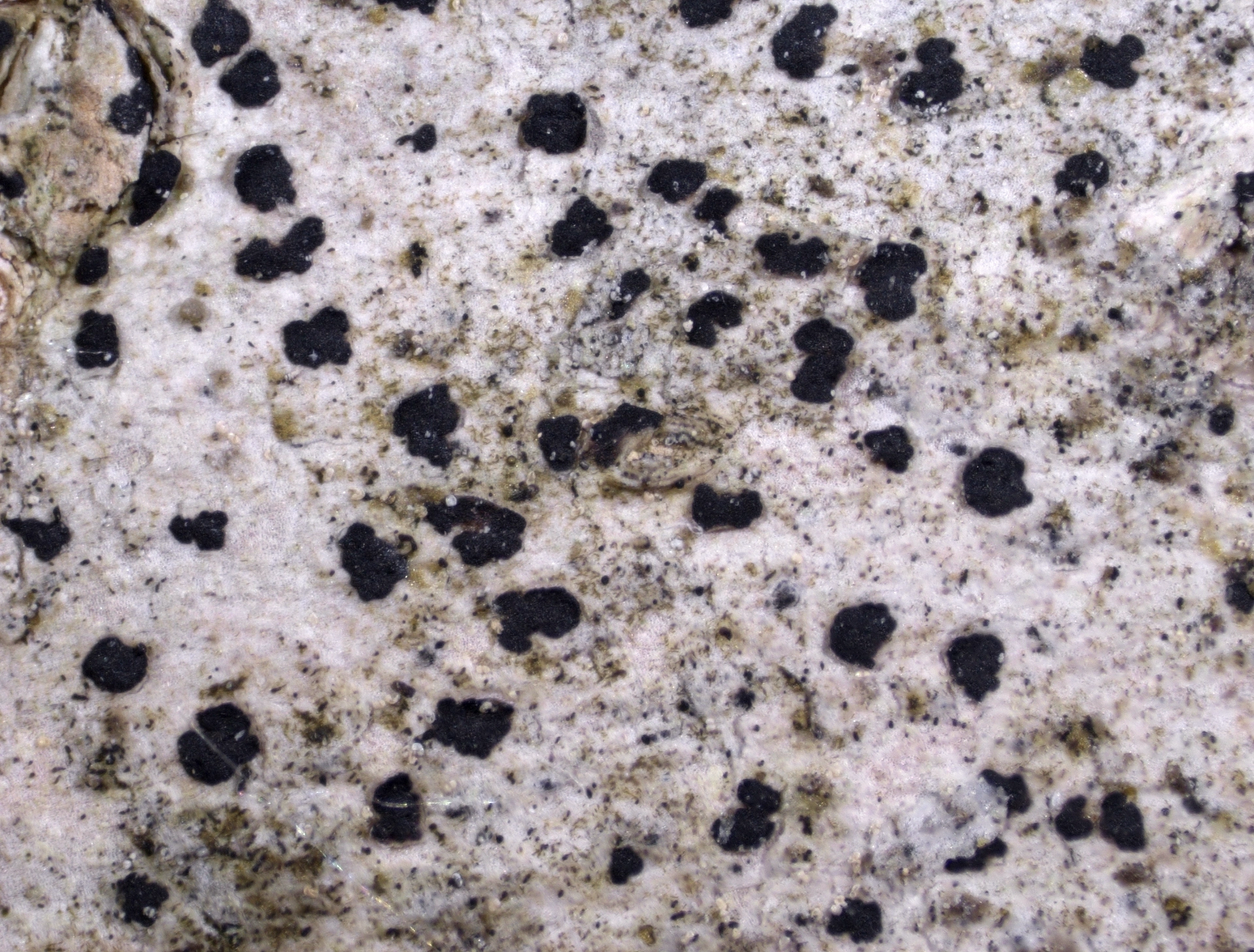Arthonia patellulata
Arthonia patellulata collected from Populus tremula at Skådalen, Aker, in Oslo (O-L-67759).
Arthonia patellulata is a pioneer species growing on aspen trees. It is characterized by minute black, weakly convex apothecia with constricted base on a thin, grey-white thallus with chlorococcoid photobiont. The colorless spores are 1-septate.
- Innhold
- Description
- Ecology
- Distribution in Norway and the Nordic countries
- Global distribution
- Similar species
Description
Thallus
The thin but extensive thallus is pale grey or white, and immersed in the substrate. The thallus margin is not determinate. The photobiont is a chlorococcoid alga.
Fruitbodies
The apothecia are rounded, with slightly constricted base attached to the thallus, black, and without pruina. They are weakly convex, 0.2–0.7 mm in size and 100–150 μm tall.
The epithecium is 5–15 µm tall and pale brown.
The hymenium is pale green and 40–60 μm tall.
The hypothecium is dark brown and 50–80 μm tall.
The paraphysoids are ca 1 μm wide. Their tips are slightly widened to 2 µm but without dark pigment caps and plaques.
The asci are clavate, without stipe, 26–35 × 10–14 µm in size, and 8-spored.
The spores are colorless, slipper-shaped, slightly constricted at the septum, 7–11 × 3–4 μm in size, and divided by 1 transverse septum.
Anamorph
The pycnidia are brownish black, attached to the thallus, and 40–50 µm in size. The wall is olive-brown. The rod-shaped conidia are 3–6 × 1 μm in size and straight or slightly bent.
Chemistry
The thallus does not react with C, K, KC, Pd, or UV (C–, K–, KC–, Pd–, UV–). Lichen secondary compounds have not been detected by TLC.
The hymenium reacts I+ red and KI+ blue. A KI+ blue ring structure has been observed in the asci.
The brown pigment in the apothecia and in the wall of the pycnidia are unchanged in K solution.
Arthonia patellulata collected from Populus tremula in Evje og Hornnes (O-L-221323).
Ecology
Arthonia patellulata is a pioneer species that grows mainly on smooth bark of middle-aged aspen trees or branches of aspen (Populus tremula). It prefers well-lit situations and is not dependent on high humidity.
Distribution in Norway and the Nordic countries
Arthonia patellulata occurs throughout Norway but is not often collected. In the Nordic countries, it is also known from Denmark, Finland and Sweden.
Global distribution
Outside the Nordic Countries, A. patellulata is widely distributed in temperate to boreal climates in Europe and North America.
Arthonia patellulata collected from Populus tremula near Ekeberg in Oslo in 1868 (O-L-67762).
Similar species
Specimens of the common Arthonia apatetica growing on aspen trees have usually smaller apothecia and a pale hypothecium. The epithecium is formed of the periclinally arranged tips of the paraphysoids with distinct dark pigment caps and plaques.
Literature
Cannon P, Ertz D, Frisch A, Aptroot A, Chambers S, Coppins BJ, Sanderson N, Simkin J and Wolseley P (2020). Arthoniales: Arthoniaceae. Revisions of British and Irish Lichens 1: 1–48.
Sundin R (1999). Phylogenetic and taxonomic studies within Arthonia Ach. (Ascomycetes, Arthoniales). Botaniska institutionen, Stockholms universitet, Stockholm.
Wirth V, Hauck M and Schultz M (2013). Die Flechten Deutschlands, vol. 1+2. Ulmer, Stuttgart. 1244s.



